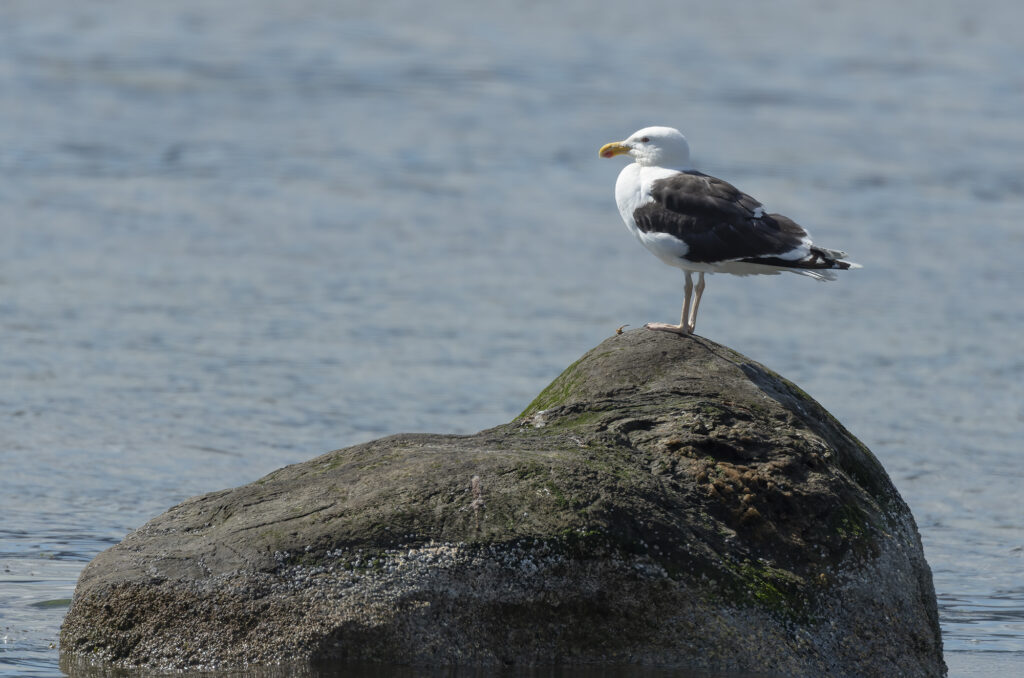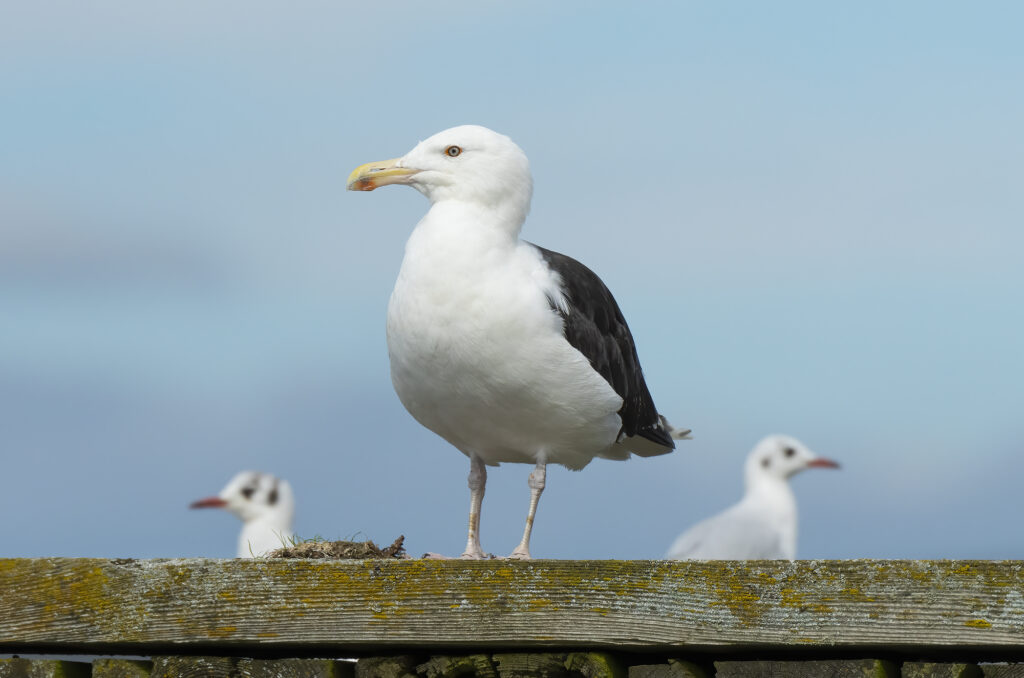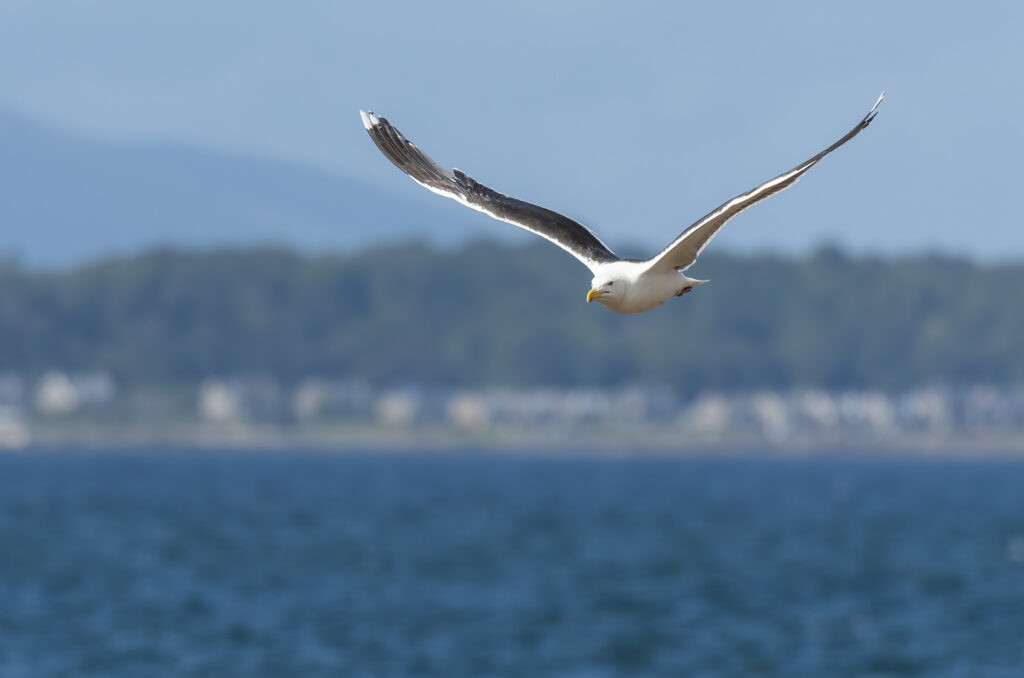While walking along the sand, you feel an icy gaze settle on you. A shrug of the shoulders, ruffling coal-coloured wings. Watching you is a huge seabird with a bright yellow beak that looks like a formidable weapon. As you walk towards it for a better look, an assortment of birds take to the sky. It remains standing on a rock, regarding you coolly. This gull has confidence that only comes from knowing it is the greatest.
If you have been in this situation, you will be familiar with the menacing presence of a great black-backed gull. Hunter. Pirate. Scavenger. The largest gull in the world has a reputation for being a brute – not helped by a viral video of one devouring a rabbit whole on Skomer Island – but it is also a beauty.
The stunner
There is the stunning contrast of pristine white feathers next to the inky black of its wings and that heavy canary yellow beak with the big red spot on the lower mandible. But it is the finer details that make this a stunning bird. The great black-backed gull’s eyes, although small when compared to the size of its head, are a frosty shade with a persimmon eye ring. Then there are those legs with the pale rose flush – often used to differentiate between the smaller lesser black-backed gull, which has yellow legs. Since spotting my first great black-backed gull, I have rarely needed to check the leg colour of these birds for identification purposes. The great black-backed gull has an unmistakable magnificence.

The seafarer
But it is not just good looks that make this bird an exciting spot on a coastal walk; this is a gull that you will only see at the coast. Some people may not think of gulls as seabirds. We understand that seabirds depend on the ocean, at least for most of their lives, but some gull species can happily exist away from the sea. Due to environmental changes, mostly brought about by humans, we are used to sharing our space with various seabirds. Herring gulls and lesser black-backed gulls are a part of urban life, while black-headed gulls and common gulls are present on inland water bodies and farmland. The great black-backed gull, however, has not adapted to life away from the sea. Your best chance of seeing them inland is during the winter when they sometimes congregate with other gull species. Spotting a great black-backed gull comes with the thrill of seeing a bird that is a true ocean-going predator.
These birds have a varied diet and are capable of attacking and eating other adult seabirds. They also do not have many predators – white-tailed eagles, sharks and orcas sometimes grab them. Great black-backed gulls are sadly listed as Amber on the UK list of Birds of Conservation Concern. As with many seabirds, the threats to this species relate to changes in prey due to climate change, human disturbance and the amount of plastic and other waste that ends up in the sea.
The subject
If you are lucky enough to spot one, these birds provide fantastic opportunities for photography. As a portrait subject, they are great for capturing detail if you have a long enough lens or can get close – which is often possible as they are not easily spooked. In the image below, the two black-headed gulls flanking the great black-backed makes for an interesting portrait by highlighting the physical differences between the species.

Images of these birds in flight showcase their size and wingspan. As a large bird, their often slow flight speed is perfect for practising these shots. I took the image below on the coast near Portencross Castle. Here, I like to stand on the rocks and wait for seabirds to fly past to capture images at eye level.

With its reputation for downing fluffy rabbits and stealing food and eggs from cuter and daintier birds (think puffins), the great black-backed gull is probably a marmite species. But loathing such a beautiful gull does it an injustice. This is a true seabird worthy of our admiration, although I will be honest and say it has my love.

